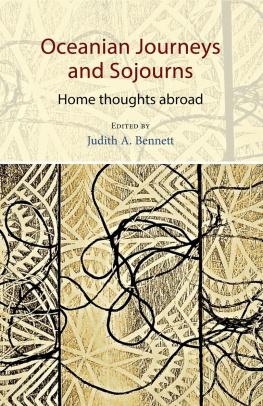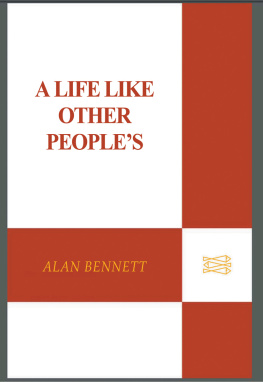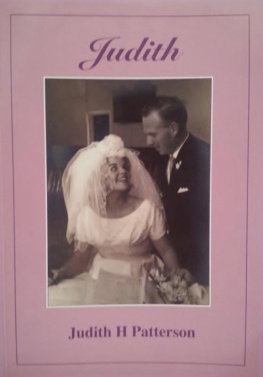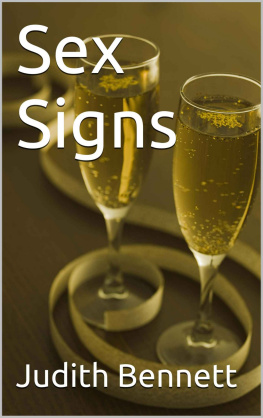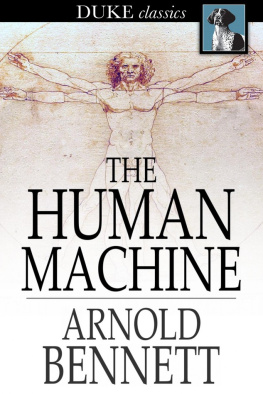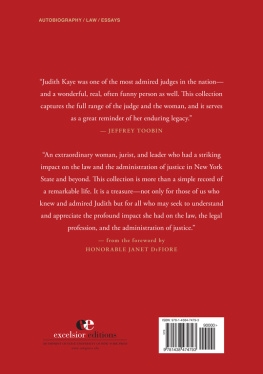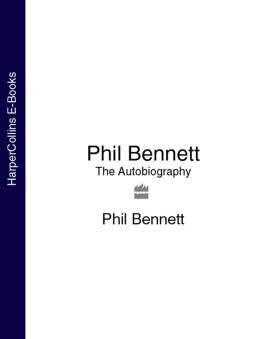Judith M. Bennett - A Medieval Life
Here you can read online Judith M. Bennett - A Medieval Life full text of the book (entire story) in english for free. Download pdf and epub, get meaning, cover and reviews about this ebook. year: 2020, publisher: Lightning Source Inc. (Tier 2), genre: Religion. Description of the work, (preface) as well as reviews are available. Best literature library LitArk.com created for fans of good reading and offers a wide selection of genres:
Romance novel
Science fiction
Adventure
Detective
Science
History
Home and family
Prose
Art
Politics
Computer
Non-fiction
Religion
Business
Children
Humor
Choose a favorite category and find really read worthwhile books. Enjoy immersion in the world of imagination, feel the emotions of the characters or learn something new for yourself, make an fascinating discovery.
- Book:A Medieval Life
- Author:
- Publisher:Lightning Source Inc. (Tier 2)
- Genre:
- Year:2020
- Rating:4 / 5
- Favourites:Add to favourites
- Your mark:
- 80
- 1
- 2
- 3
- 4
- 5
A Medieval Life: summary, description and annotation
We offer to read an annotation, description, summary or preface (depends on what the author of the book "A Medieval Life" wrote himself). If you haven't found the necessary information about the book — write in the comments, we will try to find it.
A Medieval Life — read online for free the complete book (whole text) full work
Below is the text of the book, divided by pages. System saving the place of the last page read, allows you to conveniently read the book "A Medieval Life" online for free, without having to search again every time where you left off. Put a bookmark, and you can go to the page where you finished reading at any time.
Font size:
Interval:
Bookmark:

A Medieval Life
THE MIDDLE AGES SERIES
Ruth Mazo Karras, Series Editor
Edward Peters, Founding Editor
A complete list of books in the series is available from the publisher.
A MEDIEVAL LIFE

Cecilia Penifader and the World of English Peasants Before the Plague
Judith M. Bennett

UNIVERSITY OF PENNSYLVANIA PRESS
PHILADELPHIA
Copyright 2021 University of Pennsylvania Press
The current work is a revised edition of the book first published in 1998 as
A Medieval Life: Cecilia Penifader of Brigstock, c. 12951344.
All rights reserved. Except for brief quotations used for purposes of review or scholarly citation, none of this book may be reproduced in any form by any means without written permission from the publisher.
Published by
University of Pennsylvania Press
Philadelphia, Pennsylvania 19104-4112
www.upenn.edu/pennpress
Printed in the United States of America on acid-free paper
1 3 5 7 9 10 8 6 4 2
A catalogue record for this book is available from the
Library of Congress
ISBN 978-0-8122-2469-6
CONTENTS

PREFACE

I am fortunate in this book: it was fun to write in its original form, and it has now been fun to revise. For this new edition, I have taken advantage of digitized editing to correct errors, add substantive comments, and smooth phrasing. But I have not changed the core of the book, and its chapters remain much as they were. The most extensive additions are in a brief discussion of historical methods and historiography, and I have added to each chapter a sidebar on how historians know what we know. I hope these exampleson subjects like puberty, climate change, and DNAwill bring into better focus the methods, interpretations, and collegial arguments that lie behind the received wisdom provided here.
The illustrations have been entirely reworked so that most medieval images are from a single source: the famous Luttrell Psalter, created not far from Cecilia and during her lifetime. The Luttrell Psalter provides a coherent visual program, and because many of its images are available online in full color, readers can easily investigate them further. A simple search under luttrell psalter will turn up a plethora of online images, but a good place to start is the British Librarys own treatment of the volume, found at https://www.bl.uk/collection-items/the-luttrell-psalter. The images are reproduced here by kind permission of the British Library, British Library, Add Ms 42130, with the folio citations given under each image.
Suggestions for further reading have been fully updated.
CHAPTER 1

Ordinary People
Crusaders marching off to reclaim the Holy Land; kings besieging castles with archers and men-at-arms; bishops celebrating Masses in new cathedrals; merchants haggling for bargains at fairs and markets. These are the people whose stories are told in most histories of the Middle Agesand these people were, to be sure, important movers-and-shakers in their time. But they were also atypical. Most medieval people were not knights, kings, churchmen, or merchants. Most (more than nine out of ten) were peasants who eked out hard livings from the land. Yet even our modern dramas of medieval-like worlds almost forget this vast peasant population. The smallfolk of the Seven Kingdoms in Game of Thrones are mere background, mentioned passingly as dirty, dull, and mildly dangerous; even the free, unsettled, and foreign wildlings get more respect. In Lord of the Rings, halflings are cleaner, smarter, and more benevolent, but they are hobbits, not humans. Ignored in elite histories and dehumanized in dramatic fantasies, medieval peasants have mostly disappeared from our imagination. This book seeks to right the balance by telling the story of the English peasantry through the life of one very real, very human, and very medieval peasant: Cecilia Penifader who lived in the English midlands in the decades just before the Black Death (13471349).
Why should we care about peasants? The simple fact that we have turned medieval peasants into filthy smallfolk and hobbits with hairy feet suggests we had better take a second look. Peasant is not a word that we usually apply today to people who cultivate crops in first-world countriesinstead, we call these people farmers and farm laborers. We use peasant to describe cultivatorssmall cultivatorsin less developed economies. In Europe, peasants are understood to have disappeared with modernization, a process that, in the phrasing of one famous book on the subject, made nineteenth-century peasants into modern Frenchmen. In North America, European colonists are deemed to have been transformedby virtue of their migration and resettlementfrom peasants into farmers. In China, where perhaps 50 percent of the population were peasants c. 1950, economists now argue about whether there are any peasants left at all. Yet societies of small, subsistence cultivators persist and even thrive today, especially in Central and South America, in sub-Saharan Africa, and in south Asia. To put this another way, peasants and peasant economies are part of our present as well as our past. If we think of todays peasants as smallfolk or halflings, we risk profoundly misunderstanding our contemporary global economy.
For historians of medieval Europe, the importance of peasants derives from two particular ideas about humans and human society. First, ordinary people have mattered in the making of history. U.S. History provides a good example. Any general history of the twentieth-century U.S. rightly talks about extraordinary individuals like Henry Ford, Al Capone, Eleanor Roosevelt, Billy Graham, Rosa Parks, and Bill Gates, but it also describes how the lives of ordinary people changed between 1900 and 2000better housing and diets, more education, changing sexual mores, and the like. And it also considers how ordinary people changed the course of history, sometimes through collective protest (as with the Vietnam War and civil rights) and sometimes through everyday, private decisions (as with diminished birthrates). Ordinary people make history tooand as we shall see, this was as true of medieval peasants as of modern citizens.
Second, historians understand that history is richer when seen from the margins. It is easy to forget about medieval peasants (the margin) if you start in royal courts and wealthy monasteries (the center). But it is hard to overlook monarchs and monks if you start from peasant cottages. This might sound abstract, but it is concrete and real. For a modern example, consider professional sports. Team owners and players stand at the center of this industry, but if we think about sports only from their perspective (worries about revenues, salaries, and advertising contracts), we can almost lose sight of the fans without whom there would be no revenue-producing leagues and championships. If we flip the perspective and look at professional sports from the viewpoint of the fans (exciting games and charismatic athletes), we never risk forgetting the owners and players, who are simply too rich and famous to ignore. Fans might be on the margins of the sports business, but adopting their perspective helps us remember that professional sports are fundamentally about entertainment.
Next pageFont size:
Interval:
Bookmark:
Similar books «A Medieval Life»
Look at similar books to A Medieval Life. We have selected literature similar in name and meaning in the hope of providing readers with more options to find new, interesting, not yet read works.
Discussion, reviews of the book A Medieval Life and just readers' own opinions. Leave your comments, write what you think about the work, its meaning or the main characters. Specify what exactly you liked and what you didn't like, and why you think so.


